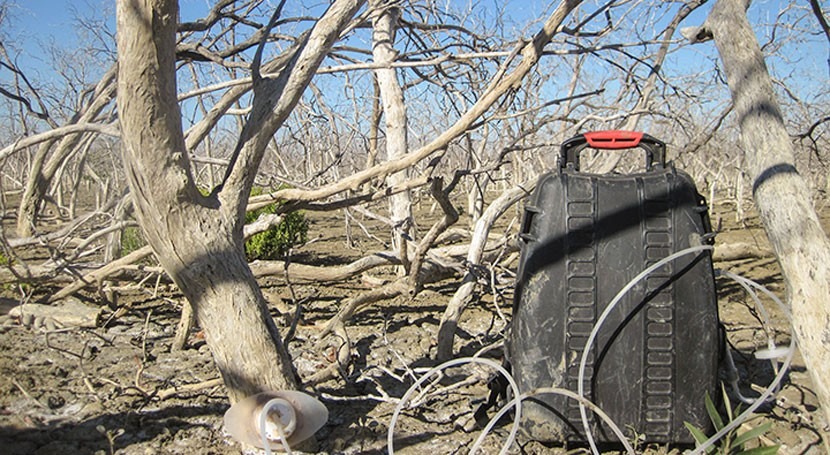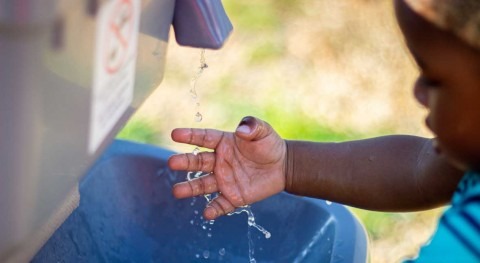Mangrove biomes are able to remove CO2 from the atmosphere into long-term storage more so than other types of vegetation cover, making them some of the best carbon scrubbers. These forests thrive in muddy and saline environments in tropical coasts, such as those of northern Australia. Their litter decomposes slowly because they are flooded at high tide, and so carbon is removed from the atmosphere and stored as peat in soils.
In 2016, unusually warm temperatures and low rainfall caused by global warming and a strong El Niño, resulted in a massive die-off of mangrove trees along the Gulf of Carpentaria, a shallow sea in the north of Australia. The site where this occurred, a 1,000 km coastline, has been the object of new research to measure the emissions of methane from the dead trees, and scientists have found these emissions to be up to eight times higher than those from healthy mangrove trees, reports The Guardian.
The objective of the study was to understand what occurs when climate related pressures, like heat waves, bring about forest mortality. Scientists measured methane emissions from an area of live trees and compared them to emissions from an area with dead trees that was two kilometres from it.
Usually carbon storage outweighs methane emissions by forests, even though the impact of methane is 34 times greater than that CO2. But when mangrove trees die and do not take in CO2, the net result is an increase in emissions. According to the lead researcher, Luke Jeffrey, the results have ‘significant implications’ concerning emissions of greenhouse gases from this type of coastal areas, as similar massive diebacks may take place more frequently in the future as a consequence of global warming.
Understanding these processes is important for policies such as carbon offsetting. A carbon offset is a reduction in emissions of carbon dioxide or other greenhouse gases ─ for example, by planting trees ─ made in order to compensate for emissions made elsewhere.








